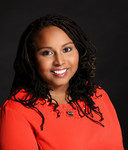Millennials Are Sick: What Health Care Organizations Need to Know About the Shifting Health Care Landscape
// By Althea Fung //
 The 2019 Blue Cross Blue Shield Health Index report found one-third of millennials — people born between 1981 and 1996 — have a health condition that lowers their life expectancy and quality of life. In comparison to Generation Xers at the same age, millennials have significantly higher incidences of several common health conditions, including type 2 diabetes, high cholesterol, hypertension, and major depression.
The 2019 Blue Cross Blue Shield Health Index report found one-third of millennials — people born between 1981 and 1996 — have a health condition that lowers their life expectancy and quality of life. In comparison to Generation Xers at the same age, millennials have significantly higher incidences of several common health conditions, including type 2 diabetes, high cholesterol, hypertension, and major depression.
Despite needing more care, millennials seem to be taking a different approach to care than other generations — they want their care on demand.

Brent Walker, senior vice president of marketing and analytics at PatientBond
“About 40 percent of millennials fall into a psychographic group called ‘Willful Endurers’ — people who live in the here and now and want immediate gratification,” says Brent Walker, senior vice president of marketing and analytics at PatientBond, a digital patient engagement company. “These groups are using urgent care, the emergency room, and retail clinics like the Minute Clinic at CVS because they don’t want to wait in line. They don’t want to wait two weeks or a month for an appointment; they want their care now.”
PatientBond is one of a growing field of companies dedicated to understanding what motivates people to make health care decisions. Performing national surveys of various groups, PatientBond offers insights into what consumers want from their health care experience.
The Illinois-based company uses psychographic segmentation, a system for categorizing consumers into five subgroups based on shared psychological characteristics. Psychographic segmentation models can help marketers better understand the attitudes, values, and lifestyles of consumers, particularly when it comes to health care.
“You can segment people into different age groups or generations, gender, ethnicities, socioeconomic incomes, household incomes. But not everyone in those groups thinks or acts alike,” he says.
